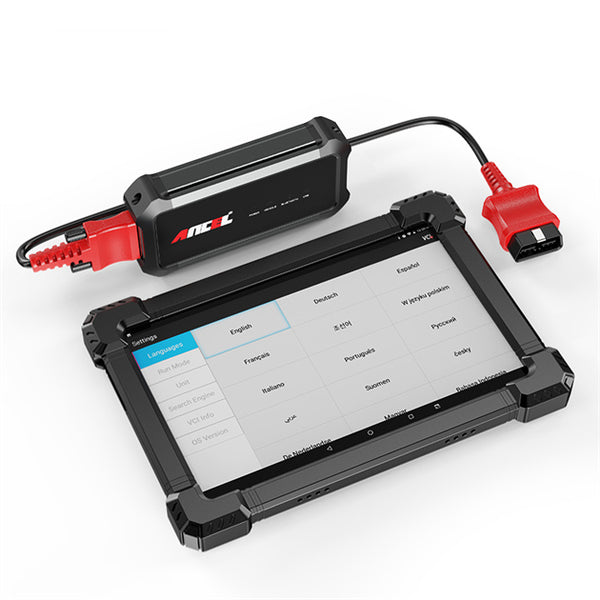When a vehicle's performance deviates from its expected parameters, the onboard diagnostic system (OBD) generates specific alerts known as Diagnostic Trouble Codes (DTCs). These codes are essential tools for mechanics and vehicle owners alike, as they pinpoint the type of malfunction occurring within various vehicle systems, such as the engine, transmission, exhaust system, and more. To retrieve and interpret these codes, one requires a diagnostic scanner, a device that can be connected to the vehicle’s standardized OBD-II port. Introduced in vehicles post-1996, the OBD-II system continually checks for performance issues, storing codes that highlight specific anomalies.
Related Reading: How to Clear Codes on Cars with Scanners
Choosing the Right Diagnostic Scanner
Selecting the correct diagnostic scanner is paramount in effectively managing and resetting DTCs. Scanners vary widely in capability and complexity:
Basic Code Readers: These are cost-effective tools that can read and clear codes but do not provide detailed diagnostic data or troubleshooting support.
Professional Scanners: More sophisticated than basic readers, these scanners can access a wealth of information including real-time data, system tests, and advanced troubleshooting assistance, making them ideal for complex diagnostic tasks.
Bluetooth Dongles: For those who prefer a more interactive approach, Bluetooth dongles paired with a smartphone app can provide a user-friendly interface and the ability to receive live updates and diagnostic assistance through mobile applications.

Step-by-Step Guide to Using a Diagnostic Scanner
Using a diagnostic scanner to clear DTCs involves a few precise steps:
Locate the OBD-II Port: Usually situated underneath the dashboard near the steering column, the OBD-II port may vary in location depending on the vehicle model and make.
Connect the Scanner: Plug the scanner into the OBD-II port. Make sure the vehicle's ignition is switched on to allow the scanner to operate.
Read the Codes: The scanner will communicate with the vehicle’s computer system; navigate through the scanner's menu to select the option to read the stored codes. It’s advisable to note these codes for future reference and further diagnosis.
Clear the Codes: After documenting the codes, proceed by locating the option on the scanner to clear them. Confirm the action and wait for the device to reset the DTCs.
Check for Residual Issues: It’s important to understand that clearing the codes does not address the underlying mechanical problems. If these issues remain unresolved, the same or new codes could reappear. Further diagnostic work or a professional mechanic’s expertise may be necessary to resolve the issue permanently.
Common Diagnostic Trouble Codes
Benefits of Regularly Using a Diagnostic Scanner
Employing a diagnostic scanner on a regular basis brings several advantages:
Preventive Maintenance: Regular checks can identify potential issues before they necessitate significant repairs, potentially saving vehicle owners inconvenient downtimes and costly repairs.
Cost Savings: Early diagnosis and intervention can prevent minor issues from escalating into major problems, thus conserving money on extensive repairs.
Improved Performance: Ensuring that all vehicle systems function correctly enhances overall performance, leading to better fuel efficiency and smoother operation.

The Best Car Scanners: Professionally Tested
The ANCEL X7 stands out in the crowded market of automotive scanners with its advanced features and professional-level capabilities. It’s not just a tool; it’s your workshop partner, designed to streamline diagnostics and maintenance with precision and ease.
Advanced All-Systems Diagnosis
The ANCEL X7 isn’t limited to basic checks. It provides a full-system diagnosis covering all electronic systems within your vehicle. Whether you're dealing with engine issues, transmission glitches, or ABS problems, the X7 gives you a detailed analysis of every critical component.
ECU Coding and IMMO Keys
This scanner goes beyond standard diagnostics with ECU coding capabilities, allowing you to customize car settings for your clients, enhancing vehicle performance and functionality. Additionally, the ANCEL X7 features IMMO key programming, a vital service for vehicle security that enables you to manage key and immobilizer issues, providing an all-in-one solution for advanced vehicle security management.
Extensive Reset Services
Equipped with over ten specialized reset functions, the ANCEL X7 is truly versatile. From Oil Resets to Injector Resets, every major maintenance service is covered. This includes:
EPB Reset: Adjust brakes after repairs or replacements.
Active Test for Immediate Feedback
The ANCEL X7 offers an active test feature, allowing you to send commands to various systems to verify their operational integrity. This direct interaction with the vehicle’s components facilitates a dynamic testing process, providing you with immediate feedback and enabling quick and effective troubleshooting.
Flexible Connectivity Options
Flexibility is key in any workshop, and the ANCEL X7 excels with its dual connectivity options. Choose between a wireless VCI for freedom of movement around your workspace or a reliable lined USB connection for stable diagnostics.
Why Choose the ANCEL X7
When it comes to selecting the right tools for your automotive diagnostics and repair needs, the ANCEL X7 stands out with its robust features and reliable performance. It’s professionally tested to meet the demands of modern automotive repair, offering not just a range of functions but the flexibility and precision that today’s mechanics require.
Conclusion
Effectively managing and resetting DTCs using a diagnostic scanner is a crucial aspect of modern vehicle maintenance. While the scanner itself can help reset the DTCs, addressing the root causes of these codes is essential for ensuring the vehicle's longevity and operational efficiency. Regular diagnostics not only help maintain vehicle health but also contribute to safer and more reliable driving experiences. In conclusion, the purpose of employing a diagnostic scanner goes beyond merely clearing the codes; it involves a comprehensive approach to understanding and rectifying the underlying vehicle issues.
FAQs
What is an OBD-II system?
The Onboard Diagnostic II (OBD-II) system is a standardized system introduced in vehicles post-1996 that monitors a vehicle’s performance and checks for issues. It can store codes that indicate various performance anomalies.
How do you use a diagnostic scanner to clear DTCs?
To clear DTCs using a diagnostic scanner, first locate the OBD-II port, usually under the dashboard near the steering column. Connect the scanner with the vehicle's ignition on, read the stored codes, and choose the option to clear them from the scanner's menu.
What should you do after clearing the DTCs?
After clearing the DTCs, it's important to address the underlying issues that caused the codes. If not resolved, the same or new codes may reappear. Further diagnostic work or consultation with a professional mechanic may be necessary.
















1 Gedanke zu „ How to Clear Codes on Your Car with a Scanner - The Best Scan Tools Await You! “
Anything b
This company stole my money and scan tool don’t buy a scanner from them